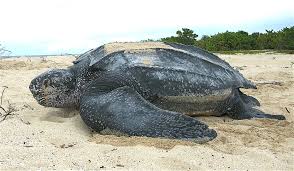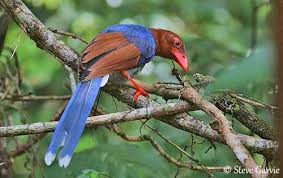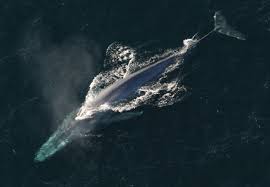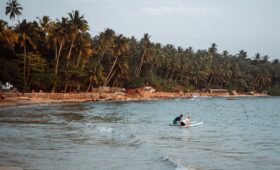Sri Lanka wildlife – 9 wild animals you might not see in your next Sri Lankan tour.
Sri Lanka is well on her way to becoming South Asia’s mainstream wildlife holiday destination in the foreseeable future. This is partly because of the booming tourism industry, adorned with breathtaking beaches and friendly locals, trying to find its own place among Asian tourism giants; like Maldives, Thailand, India and so on. On the other hand, the island’s wildlife is diverse and disproportionate to her relatively smaller size. This is also the case with her contrasting landscapes from unique high altitude tropical relic rainforests to almost savannah-like Deccan dry thorn scrub forests. Paradoxically, sustainable eco-tourism is only just at its outset in this part of the world and Sri Lanka’s rare wildernesses and delicate ecosystems have already been changing for as long as any generation can recall. Recent deforestation of Wilpattu buffer zone sanctuaries is a prime example of a trend that has been on since the colonial era. An average Sri Lankan’s rhetoric seems to be limited to social media and political awareness only. In this uninspiring backdrop, the island has so far managed to retain 16% endemism in fauna; one of the highest in the world.
Overall, a rough count of her long list of species records 123 mammals ( 16 endemic ), 179 reptiles ( 109 endemic ), 179 amphibians ( 112 endemic ), 459 birds ( 34 endemic ), 93 freshwater fish ( 50 endemic ), 245 butterflies ( 24 endemic ), 148 bees, 5 species of sea turtle and one of the largest populations of blue whales and sperm whales in the world. Hopefully, her extinct species list might not be as long. On the bright side, all of these crammed into an island measuring only 25332 square miles; roughly the size of Ireland! making it the only place in the world where one could watch blue whales on day one, leopards or elephants on day two and blue magpies on day three. This view seems to work like a charm for the tour itineraries as well. On the island, UNESCO has declared 4 international biosphere reserves, marking the importance of her biodiversity. The Sri Lankan Department of wildlife has declared 61 wildlife sanctuaries spanning over an area of 1073 square miles. It also operates 26 national parks including 2 marine national parks, while claiming 2214 square miles of land. Roughly 16% of the total land area is legally reserved for wildlife. Keep reading if you want to know the rarest spots you have made.
1.LEATHER BACK SEA TURTLE
( Dermochelys coriacea )
The leatherback sea turtle is the largest sea turtle on earth. Its name derives from a unique leather skin on its back. It is unique because all known sea turtles have a hard shell on their backs. This special stretchable skin allows it to dive down to depths of 1500 meters in search of jellyfish to prey upon. It is mostly found in open oceans and only seen on land during nesting season. Kosgoda beach in southwest Sri Lanka is a nesting ground for a number of sea turtle species including the leatherback. It is found in tropical and temperate waters of the Atlantic, Pacific, and Indian oceans. A fully grown leatherback weighs between 600 to 1500 pounds. It is the 4th largest reptile on the planet. This critically endangered species is listed in the IUCN red list.

2.CEYLON BLUE MAGPIE
( Urocissa ornata )
Sri Lankan blue magpie is a rare endemic bird. It is restricted to the tropical lowland rainforests. The bird is famously spotted at Sinharaja rainforest reserve which is one of the UNESCO natural world heritage sites. It has the most striking appearance with a chocolate brown head, blue plumage and red beak, eye rings, and legs.

3.THE BLUE WHALE
( Balaenoptera musculus )
The blue whale is the largest animal that ever existed on our planet. It is larger than a dinosaur. It is around 30 metres long and can weigh above 200 tonnes. A blue whale tongue weighs more than an African elephant. Its heart is the size of a small car and the heartbeat felt 3 miles around. It makes a noise measuring 188 decibels which is louder than a jet engine. The oldest recorded age is 120 years. The blue whale is a marine mammal and its closest living relative is the Hippopotamus. Before 53-54 million years ago their ancestors adapted to life in the oceans.

4.CEYLONESE SLOTH BEAR
( Melursus ursinus inornatus )
The sloth bear is a bear species specially adapted to a tropical omnivorous lifestyle. Insects are a delicacy for sloth bears. It is indigenous to the sub-continent region. The Sri Lankan sloth bear is an endemic subspecies present in the island’s dry zone forests. Deforestation is a major threat to the species because it exclusively depends on natural dry zone forests for food. The present wild population estimate is around 500. It is a highly threatened species. Interestingly, sloth bears share a common ancestor with leopards.
5.CEYLONESE LEOPARD
( Panthera pardus kotiya )
Leopard is one of the five big cats. ( Lion, tiger, leopard, snow leopard and jaguar ) It is similar in appearance to the jaguar but is more lightly built. Both leopards and jaguars are called black panthers. Leopards are agile and stealthy predators which can run at speeds of 36 mph, leap 20 feet forward, jump 3 metres high and swim to hunt fish. Leopards around the world show differences in coat and spot patterns. Altogether there are 9 leopard subspecies around the world and one of them is endemic to Sri Lanka. The Sri Lankan leopard is the top predator in the island’s ecosystem.
6.HORTON PLAINS RED SLENDER LORIS
( Loris tardigradus nycticeboides )
Horton plains red slender loris is the smallest and cutest primate in Sri Lanka. A baby loris is as light as a paper clip. Troupes of loris famously curl up together to form sleeping balls during day time and are known to engage in night meetings, grooming sessions, and play behavior. This endemic primate is among the top 25 most endangered primates list already. It is highlighted in the EDGE conservation project (Evolutionarily distinct and globally endangered). Its closest living relatives are the grey slender loris and lemur of Madagascar.
7.CEYLONESE ELEPHANT
( Elephas maximus maximus )
The Sri Lankan elephant is the largest subspecies of the Asian elephants in size. 10% of all the Asian elephants occupy the island which only accounts for 2% of global habitat. Sri Lanka has the highest elephant density in Asia. Around 70% of Sri Lankan elephant habitat is shared with humans. The best places to spot wild elephants are Yala, Udawalawa, Minneriya, Kaudulla, Wilpattu, and Lunugamvehera national parks. It is not uncommon to see them near roads in the dry zone.
8.PURPLE FACED LANGUR
( Semnopithecus vetulus )
Purple-faced langur is the largest primate in Sri Lanka. It is also called the leaf monkey. This folivore travels in troupes of 6 to 20. Once found in all wet zone areas, today it is in IUCN endangered list due to loss of habitat. The call of leaf monkeys is often mistaken for leopards. Four subspecies are recognized in Sri Lanka.
9. RUSTY SPOTTED CAT
( Felis rubiginosa phillipsi )
The rusty-spotted cat is the smallest wild cat in Asia and perhaps the smallest in the world. In length, it is between 14 to 19 inches with a tail no longer than half its length. A fully grown cat only weighs around 3 lbs. Sri Lankan subspecies is a rare sight but definitely one of the cutest.


